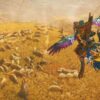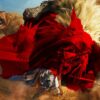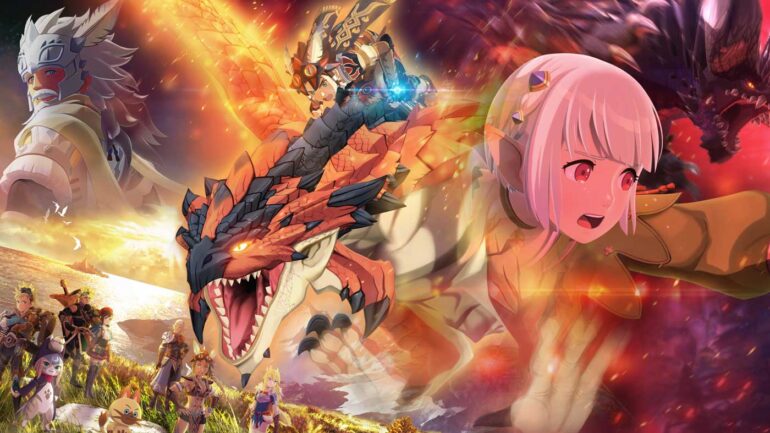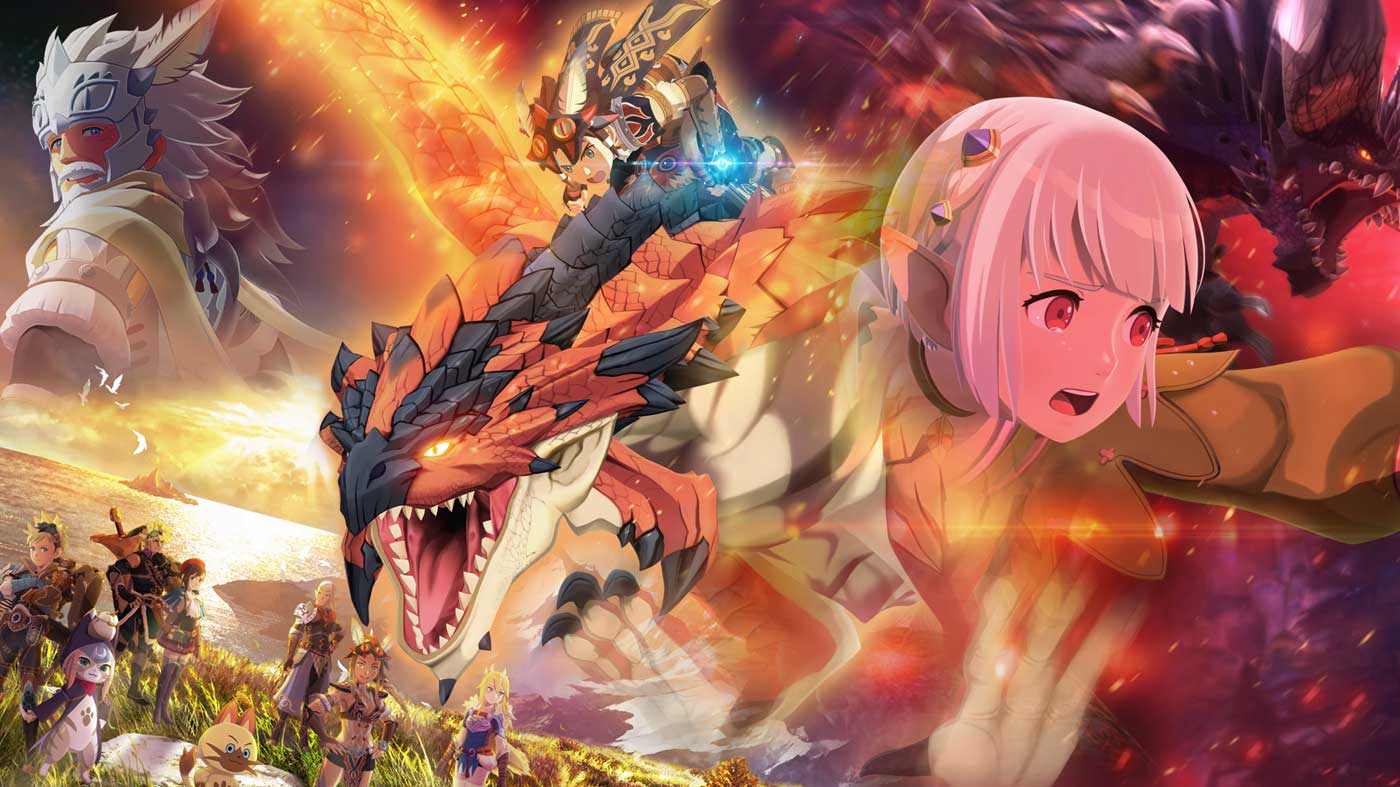Despite reviewing relatively well when it released in 2016, Monster Hunter Stories didn’t sell particularly well on the 3DS. A number of roughly 300,000 units was dwarfed in comparison to the millions that other mainline titles sell worldwide since the series took off in popularity, leaving the prospect of a sequel unlikely. Lo and behold, here we are almost five years later with CAPCOM giving the spin-off series another go in the form of Monster Hunter Stories 2: Wings of Ruin. It’s a staggeringly confident display of what you can do with a universe like Monster Hunter’s that anyone who considers themselves a fan should experience, but some big platform related caveats might sway your decision.
While it’s set in the same world as the first game, Wings of Ruin follows a mostly brand-new cast of characters on an adventure across the lands surrounding Hakolo Island, a society of Riders who befriend and bond with companion monsters adequately called “Monsties”. All sorts of strange happenings are occurring on Hakolo Island and its surrounding lands, Ratholos are disappearing, waves of red light are filling the sky, and you’ve been entrusted with an egg from Hakolo’s sacred protector who also happens to be your grandfather’s closest Monstie, Guardian Ratha. A wingless Rathalos hatches from the egg, a Rathalos that is said to grow wings that will bring ruin to the world, and it’s up to you to save Ratha from his terrible fate.
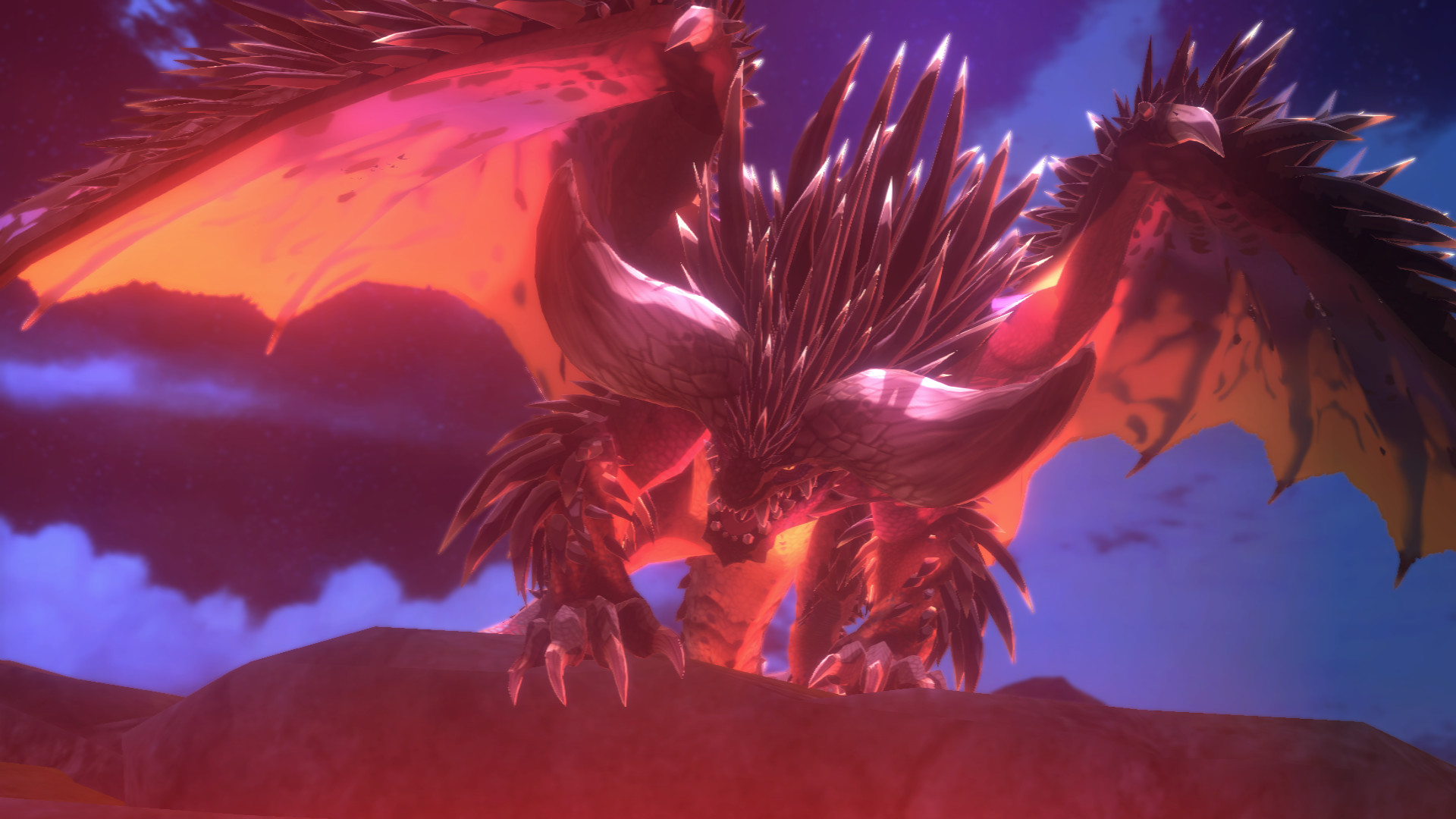
It’s a fairly typical and straightforward narrative that’ll be familiar to anyone who’s played a Monster Hunter game before, but it’s the RPG-like focus on its story and characters that lift it above the rest. It’s predictable and cheesy at times, but there’s genuine moments of sadness and triumph that really hit home thanks to some excellent cutscenes and endearing characters, It’s the same sort of uplifting tale that you’d see in a Disney or Pixar movie, just through a different lens. There’s a tangible sense of inevitability in the beginning hours of the game, that are punctuated by the story’s biggest moments, and it’s a joy to experience from start to finish. Aside from the main quest, there’s some interesting conversation on what it means to be a Rider as opposed to a Hunter, and how the two manage to coexist with each other alongside all monsters. Its aspects of this world that aren’t tackled in the mainline series, and it keeps Wings of Ruin interesting, even in its moments of downtime during the main quest.
Fans of the first game will be instantly familiar with Wings of Ruin’s gameplay loop because its largely the same, with a few new wrinkles and additions to flesh out combat, RPG elements, and Monstie growth. Main quest progression is a bit formulaic in the sense that you’ll go to a new area, help the locals out with a few problematic monsters, and then progress onto the next area. There’s side quests and optional content you can engage with off of the beaten path, but I only ever found myself engaging with it for the rewards, not because its particularly well-written or unique from what you usually do while pushing the story forward. The most addictive and arguably best part of Wings of Ruin is monster dens.
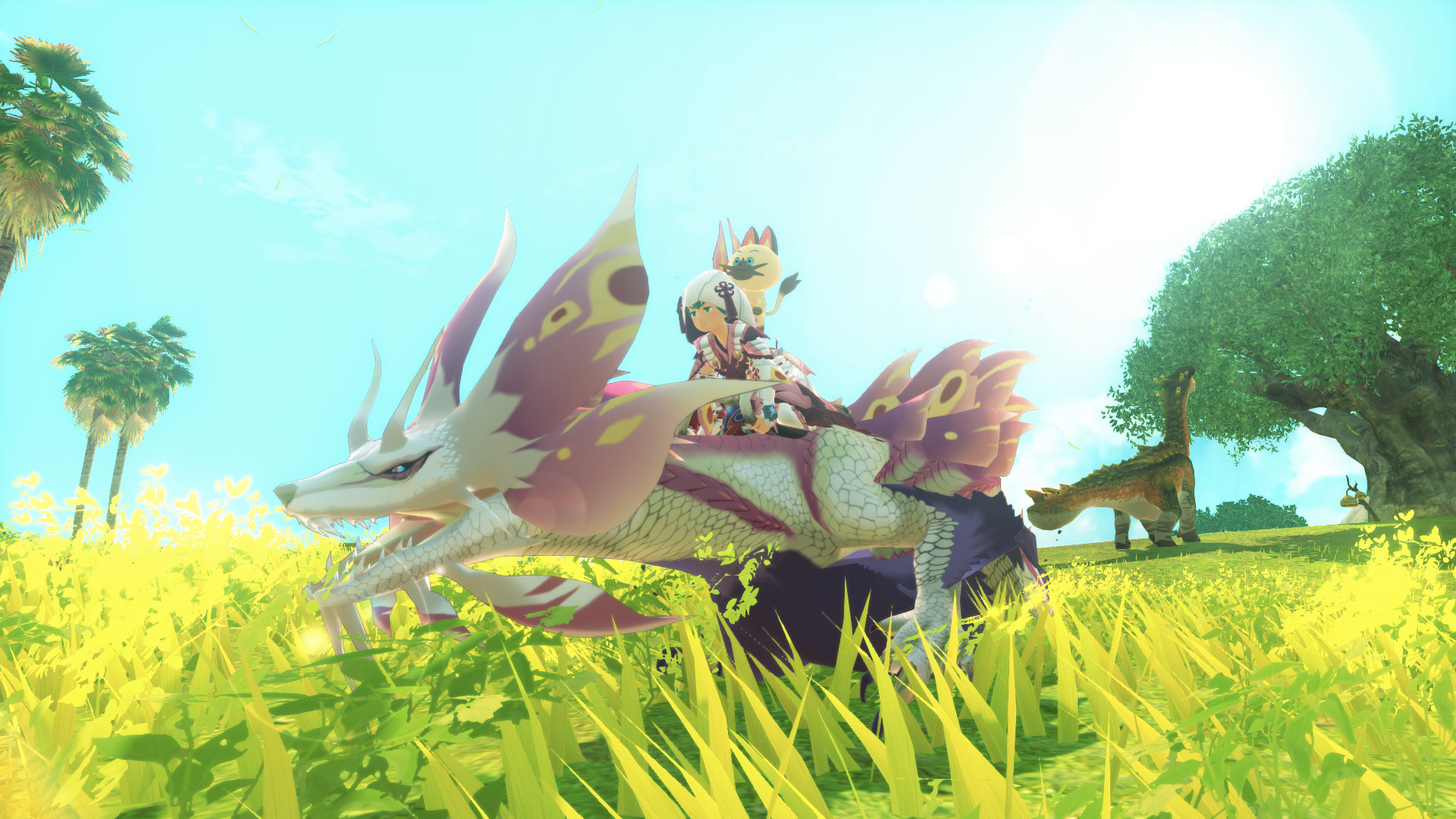
Monster dens are randomly scattered in the exploration areas, each one housing a nest and numerous monsters. Once you find the nest, you can search for eggs, each one varying in size, smell, and Monstie. The heavier and smellier the egg, the rarer the Monstie and its genes will be, which makes every single venture into a den exciting and unpredictable, especially when there’s a whopping 81 potential Monsties to hatch. Hatching your gathered eggs is akin to catching a new Pokémon, you never quite know what you’re going to get, and as you progress, you’ll find rare dens that yield rarer monsters with better genes. Every monster has a set chance to flee after you defeat them in battle which can be increased and following them to their den will always give you an egg for that particular monster. It’s the perfect mix of RNG and player agency that is further complimented by the improved Rite of Channeling system.
Every Monstie’s gene set is laid out in a 3×3 grid, with slots opening up as that Monstie levels up. Genes influence a Monstie’s inherent skills and passive abilities, lining up three genes of the same colour boost the correlated attack type for that Monstie i.e. three red genes give a 10% boost to all fire attacks. The Rite of Channeling allows you to channel a gene from one Monstie to another in any slot you wish at the cost of the channeling Monstie.
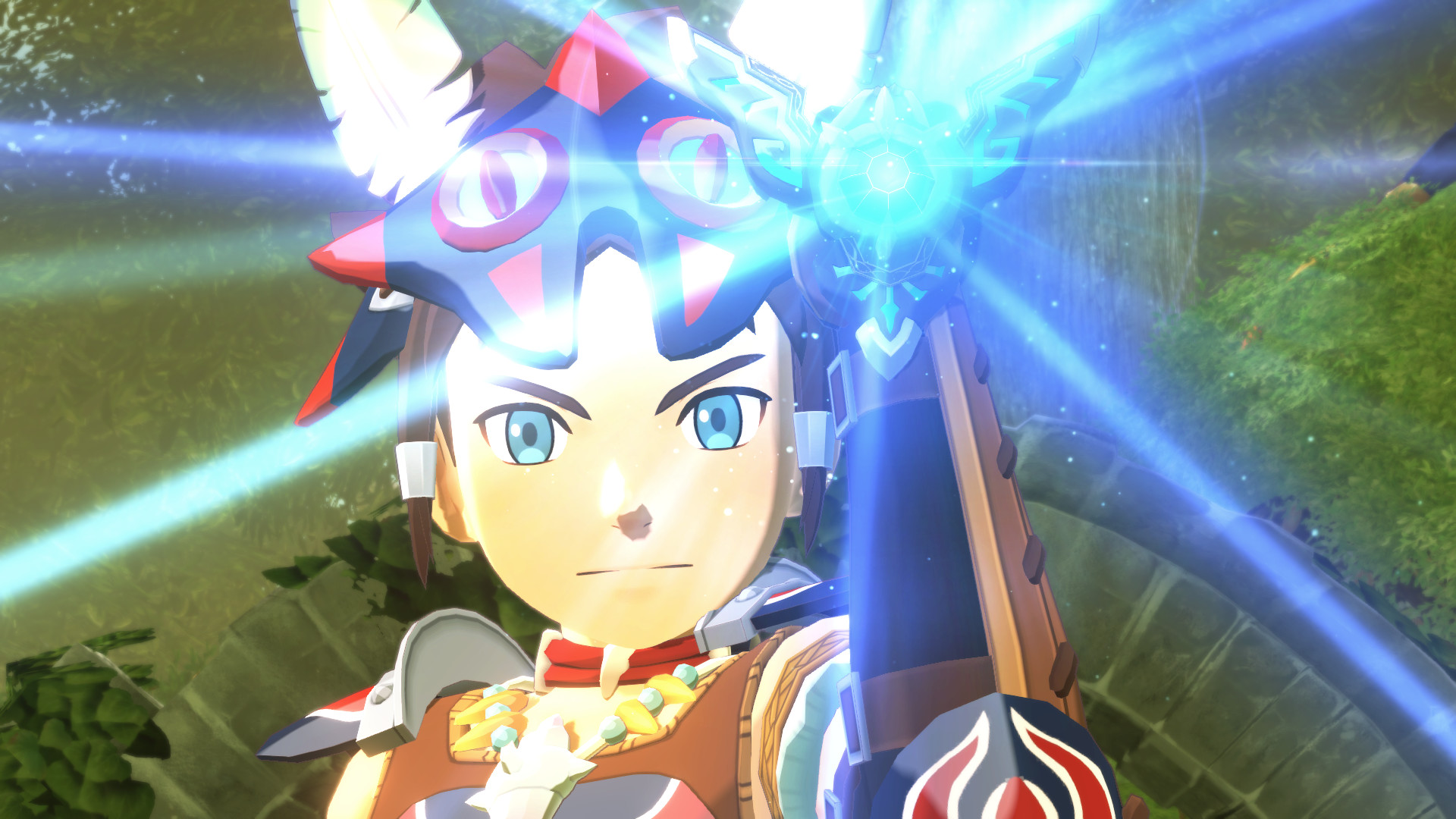
It’s a genius system that’s simple to understand and engage with but allows for endless customization and fine tuning so that you can have your party of Monsties exactly as you want them to be. It’s an addictive system that always has you striving for better Monsties and incentivizes you to continue exploring dens after you’ve hatched everything you could want. If that wasn’t enough, Dens can be tackled with friends via online co-op, meaning you can participate in battles and hunt for eggs with your friends.
Combat is where Wings of Ruin is most improved from the original in small and simple ways that build on the turn-based system further and fold more Monster Hunter flavor into the mix. For the unaware, Monster Hunter Stories is a spin-off that opts for a more thoughtful and strategic RPG combat system as opposed to the action roots of the mainline series. The core combat revolves around an attack triangle where Speed beats Power, Power beats Technical, and Technical beats Speed. If you or your Monstie attacks a target that’s targeting you, it will initiate a head-to-head where the dominant attack type wins. Winning head-to-heads builds your Kinship meter which allows you to mount your monster and perform a devastating Kinship attack. Additionally, you’ll be accompanied by AI controlled characters over the course of your journey that also help you in battle.
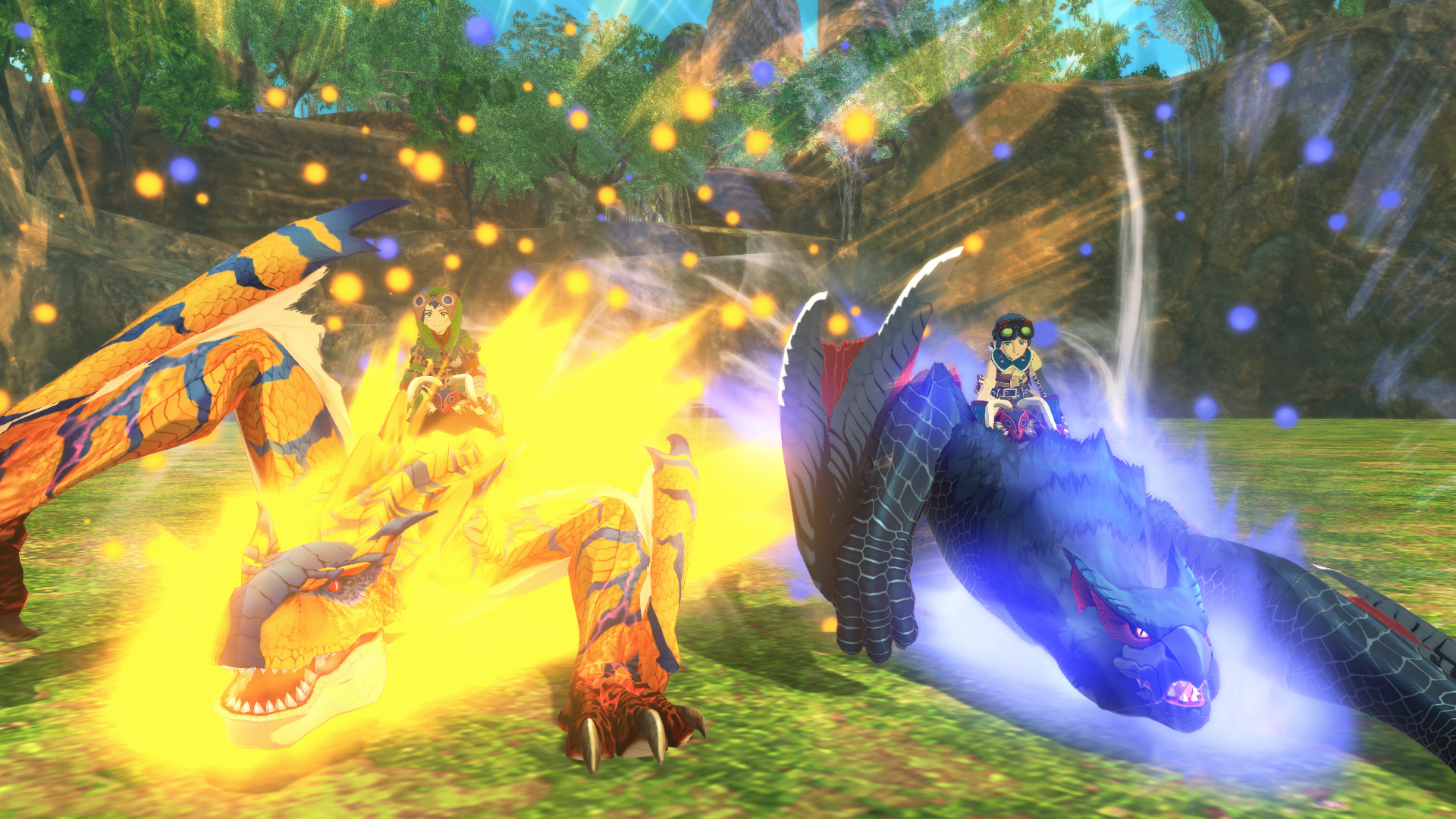
Where the complexity comes from, is in the form of weapon types, resistances, and part breaking. Each monster has elemental weaknesses and resistances that you’ll want to exploit in battle, both in offense and in defence. You can craft weapons and armor from monsters you’ve already battled to increase your own resistances, leaning into the core progression from the mainline titles. On top of this, monsters have parts that can be broken when sufficient damage is dealt to them, some of which can cause a topple when broken, leading to big damage.
The three main weapon types, Slash, Blunt, and Piece are effective against different monster parts, and the ability to have three weapons equipped at any given time means you can swap between them as you need in combat. It all results in a combat system that appears simple on the surface, but is incredibly rewarding to master, especially when you reach end and post-game content that have a satisfying level of challenge to them. This is all without mentioning weapon mechanics, Double Attacks, Skills, and Items which all add their own wrinkles onto an already stellar combat system. The returning inclusion of mini quick-time-events in combat, and the option to speed up animations keep it from ever getting too slow or stale.
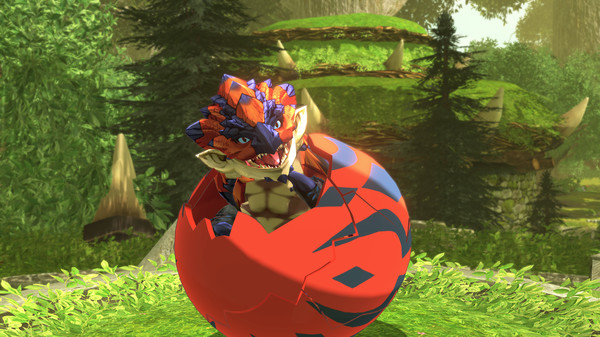
What will potentially make or break your experience with Wings of Ruin is how you play it, and by that, I mean whether you play it on PC or on Switch. The PC version is absolutely the definitive way to play the game, while environments can be a bit flat in terms of detail and the draw distance leaves a lot to be desired, it’s gorgeously animated, has a beautiful art style, jaw-dropping models, and steady performance. Not once did I have a technical issue aside from one that I assume was related to Steam, it was a joy to play from start to finish and is the version this review is based on.
THE NINTENDO SWITCH VERSION
The Switch version, however, is a different story. In handheld mode, the game looks good enough in the overworld, and great in combat, sporting the same detailed models and striking art style. However, this is at the cost of significant slowdown and choppy framerates, especially when you’re in battle. Playing in docked mode arguably makes the game look even worse, as if it’s been upscaled to 1080p from 720p, leaving the game world looking muddy and unpolished. What’s more worrying is that performance is mostly the same in docked mode and suffers from the same slowdown and frame rate issues. While I wouldn’t call the Switch version unplayable, it’s vastly inferior to the PC version to the point where I think it hinders the experience and may affect your enjoyment depending on what you value in games.
